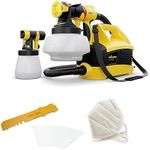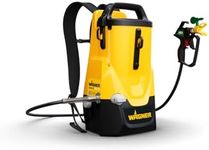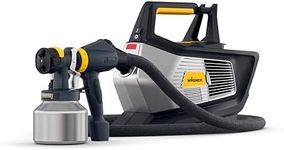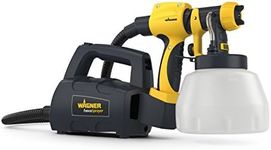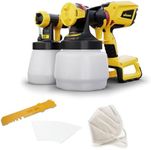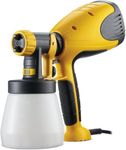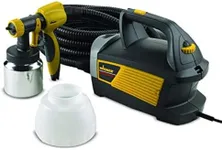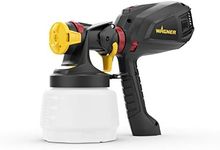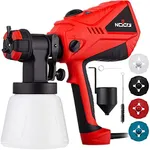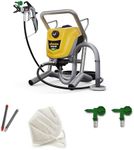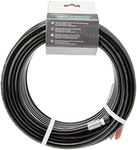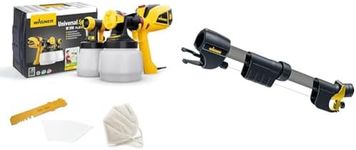Buying Guide for the Best Wagner Paint Sprayers
Choosing the right Wagner paint sprayer can make your painting projects more efficient and provide a professional finish. When selecting a paint sprayer, consider the type of projects you will be undertaking, the frequency of use, and the types of paint you will be using. Understanding the key specifications will help you make an informed decision that aligns with your needs and ensures a smooth painting experience.Type of SprayerWagner offers different types of paint sprayers, including airless, HVLP (High Volume Low Pressure), and handheld sprayers. The type of sprayer is important because it determines the kind of finish you can achieve and the types of projects it is best suited for. Airless sprayers are ideal for large surfaces and can handle thicker paints, making them suitable for exterior walls and fences. HVLP sprayers are better for detailed work and provide a finer finish, perfect for furniture and cabinets. Handheld sprayers are versatile and convenient for small to medium projects. Choose the type based on the scale and detail of your projects.
Power SourcePaint sprayers can be powered by electricity, batteries, or air compressors. The power source affects the mobility and convenience of the sprayer. Electric sprayers are powerful and suitable for continuous use, but they require access to a power outlet. Battery-powered sprayers offer more mobility and are great for outdoor projects where power outlets are not available, but they may need frequent recharging. Air compressor-powered sprayers provide consistent power but require an air compressor, which can limit portability. Consider where you will be using the sprayer and choose a power source that fits your working environment.
Paint CompatibilityDifferent sprayers are compatible with different types of paint, such as latex, oil-based, stains, and lacquers. Paint compatibility is crucial because using the wrong type of paint can clog the sprayer or result in a poor finish. Some sprayers are versatile and can handle multiple types of paint, while others are designed for specific types. Determine the types of paint you will be using most frequently and ensure the sprayer you choose is compatible with them.
Flow RateThe flow rate of a paint sprayer, usually measured in gallons per minute (GPM), indicates how much paint the sprayer can apply in a given time. This is important because it affects the speed of your painting project. A higher flow rate means faster coverage, which is beneficial for large areas. However, for detailed work or smaller projects, a lower flow rate allows for more control and precision. Consider the size of your projects and your need for speed versus precision when evaluating flow rate.
AdjustabilityAdjustability refers to the ability to change the spray pattern, pressure, and flow rate. This feature is important because it allows you to customize the sprayer's performance to suit different projects and achieve the desired finish. Some sprayers offer multiple spray patterns, such as horizontal, vertical, and circular, which can be adjusted to match the surface being painted. Pressure and flow rate adjustments help in controlling the amount of paint applied. If you plan to work on a variety of projects, look for a sprayer with good adjustability options.
Ease of CleaningCleaning a paint sprayer after use is essential to maintain its performance and longevity. Ease of cleaning is important because it affects how quickly and thoroughly you can clean the sprayer. Some models have features like easy disassembly, self-cleaning functions, or components that are dishwasher safe, which simplify the cleaning process. If you want to minimize maintenance time, choose a sprayer that is designed for easy cleaning.
